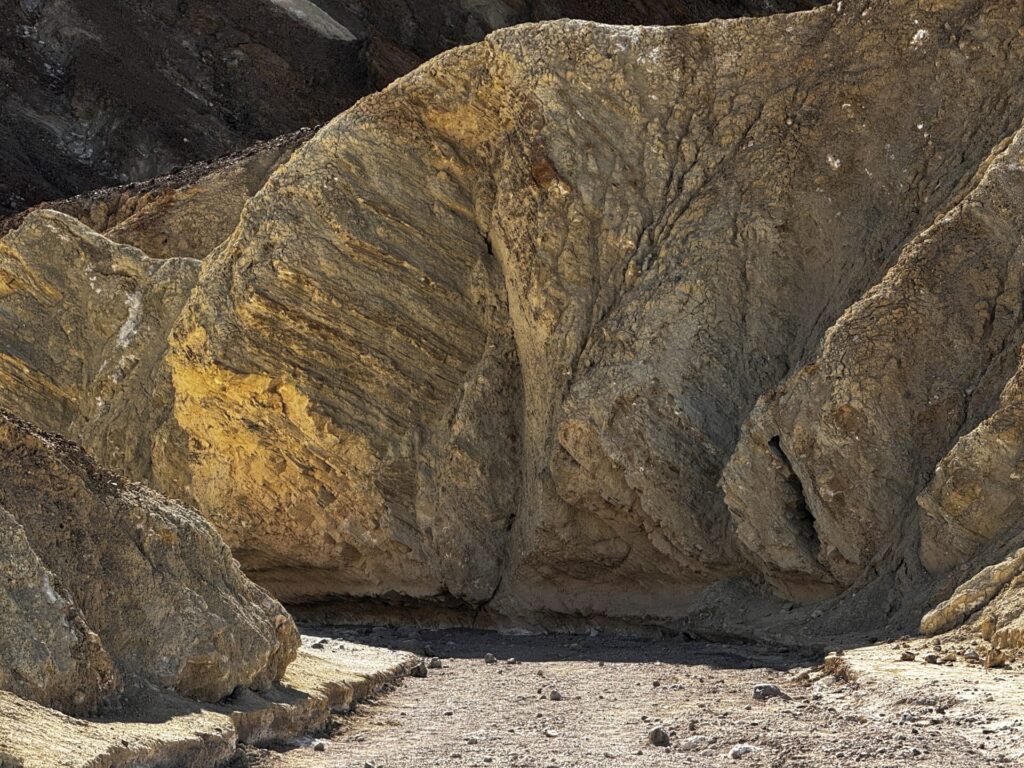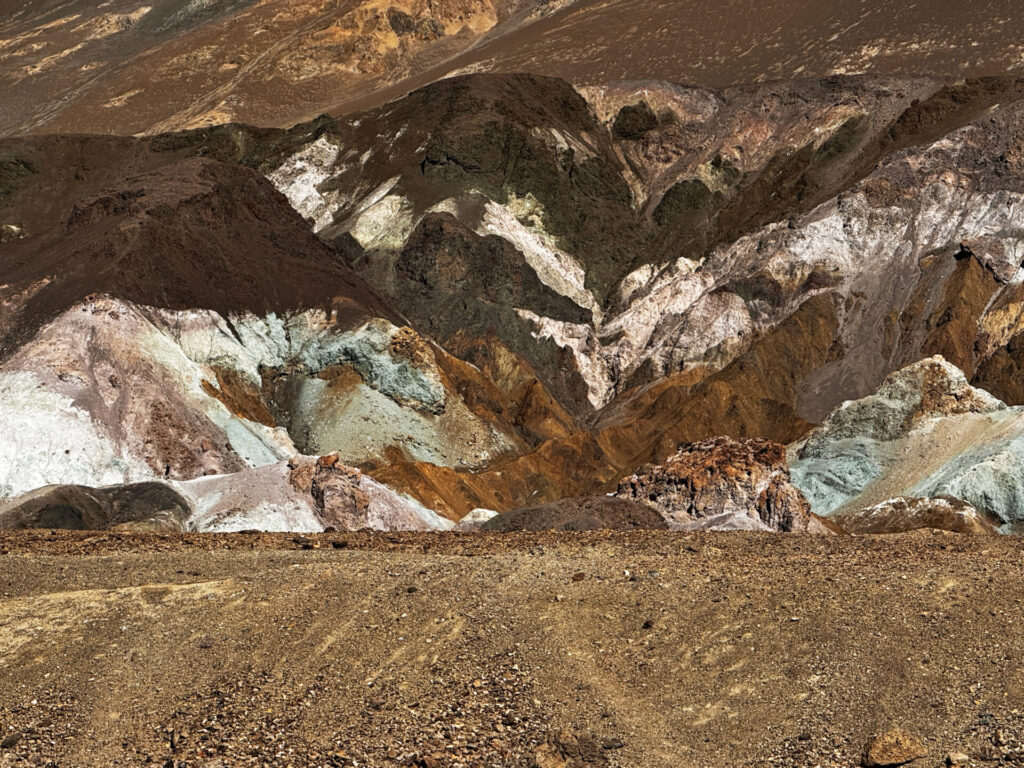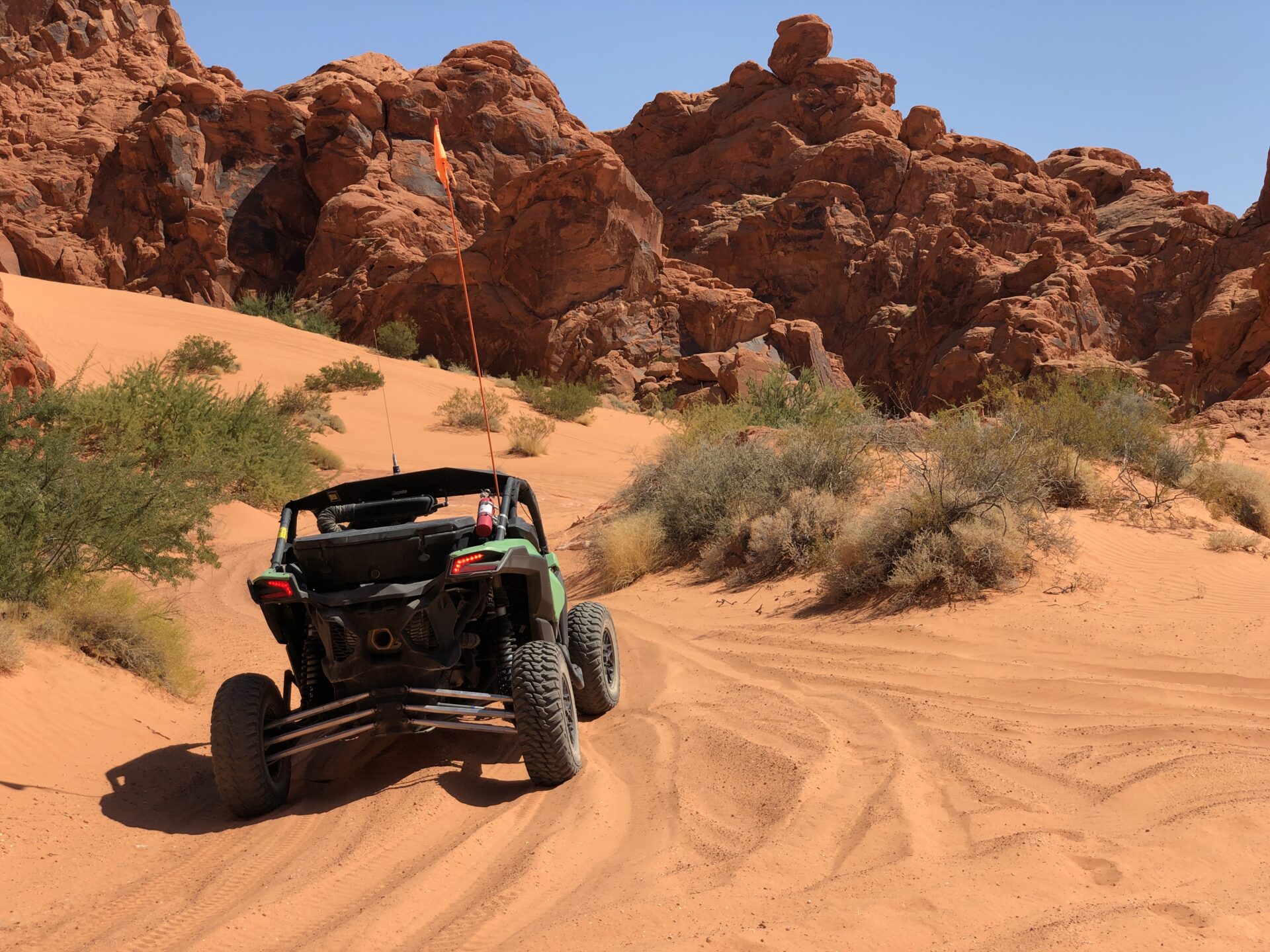As one of the largest national parks in the United States, Death Valley National Park is full of sights and activities—some that you can’t find anywhere else. At first glance, the area around Death Valley can appear to be an inhospitable place, but as you explore, you’ll find that Death Valley is anything but barren. Salt flats, sand dunes, old mines and ancient canyons with incredible rock formations all come together to make Death Valley an absolutely stunning landscape. Whether you’re a hiker, photography or just a traveler looking for another adventure, there are plenty of activities for you to do while in Death Valley.
Visit Zabriskie Point

Zabriskie Point is one of Death Valley’s most iconic viewpoints. This vantage point offers panoramic views of the badlands and their jagged, golden hills. These badlands are carved out of soft lake sediment deposits, from a time when Death Valley was deep underwater. The sediment is soft enough that water from rain can easily carve through it, but hard enough that plants can’t grow, which means their roots can’t fight erosion. As a result, you have a landscape that’s being constantly shaped and molded by the natural forces at play here. The result is an impressive landscape in the foreground, with dramatic views of the Panamint Mountains behind them.
If you want to visit Zabriskie Point, try to hit it early. Sunrises are particularly impressive here, since the sun will be at your back, painting the badlands and mountains in a golden hue. The early morning light also brings out the soft pastel colors as well, making the stony hills appear orange, yellow and pink. Looking at the area, it’s no wonder that Zabriskie Point is one of the most photographed parts of the park.
Explore Badwater Basin’s Salt Flats

Badwater Basin is perhaps the most famous sight in Death Valley. Sitting at 282 feet below sea level, it’s also the lowest point in North America—and you’re free to roam around to your heart’s content.
This area feels like stepping onto another planet. The flat land stretches out in every direction before rising into the mountains you see in the distance. The basin itself is incredibly flat and full of salt, but the mountains around it tower over you, giving the impression that you’re in the center of an enormous bowl. (We imagine that this is what it’s like to be a fried egg—especially if you visit during the summer heat.)
You can drive right up to the boardwalk around Badwater Basin. From the parking lot, simply walk down to the edge of the salt flats and get to exploring. If you visit at the right time, you may see some water collecting in the basin. At times, this whole area will fill up and become Lake Manly—a shallow, wide lake that looks like a mirror reflecting images of the surrounding mountains. From the boardwalk, take a look up at the mountainside behind the parking lot. There’s a white sign that shows you where sea level is, nearly 300 feet over your head. It’s a cool way of putting this extreme low elevation into perspective.
Wander around Golden Canyon

Golden Canyon is one of Death Valley’s most popular hikes, and for good reason. The golden-colored rocks that line the canyon walls practically glow in the sunlight, especially during the late afternoon, and if the light is right, it looks like gold. The trail is a 3-mile round trip hike, which you can extend a bit if you decide to hike along some of the side routes that line the canyon.
A lot of folks will hike all the way to the Red Cathedral—a towering structure of red stones jutting vertically into the sky—but some folks skip it, since the path requires some scrambling over rocks and a few tighter squeezes.
You can also combine this hike with the Gower Gulch Trail, which will add about a mile to your trip (and skips the Red Cathedral), but provides stunning views of the badlands you can see from Zabriskie Point. As with most hikes in Death Valley, the best time to visit is during the winter months, as canyons rarely offer much shade when the sun is overhead.
Go sandboarding—or hiking—at Mesquite Flat

If you’ve never heard of sandboarding (sometimes called duneboarding) picture it like snowboarding, except it’s drier, hotter and hurts a bit worse if you fall—but it’s still tons of fun. Sandboards are usually more rigid than snowboards and have a different type of wax coating on them so that they glide over the top of the sand grains, instead of carving through snow. Because of this, turning can be more difficult but the principles remain largely the same.
Now that you’re familiar with sandboarding, the question is: Where can we sandboard?
Dunes. You need a place with dunes. Fortunately, Death Valley has five dunes scattered about the park, and two of them permit sandboarding—Mesquite Flat Sand Dunes and Saline Valley Dunes. Of those, Mesquite Flat is conveniently located near Stovepipe Wells, making it a great spot to grab a board and shred your way down.
Mesquite Flat’s dunes can reach over 100 feet in height, and even if you don’t want to go sandboarding, they’re still worth visiting. These dunes roll on for miles, and you can hike around, exploring the different dune shapes, or wander around some of the nearby mesquite trees to see the animals that call this area home (though you’ll want to avoid the trees if you’re on a board). Overall, this is a great area to simply stop off at the parking lot and wander.
Take the scenic route through Artists Drive

Artists Drive is a scenic, one-way loop road through some of the most colorful rock formations in all of Death Valley. The highlight is the Artists Palette, with rocks the color of pastel paints. You can find rocks here that have hues of red, orange, purple, green, pink, black and gold.
These colors come from the mineral deposits found in the area, resulting from volcanic eruptions rich in iron oxide and chlorite. These colors are most vibrant in the late afternoon, when the light accentuates the rich tones of the rocks. They appear absolutely otherworldly—probably one of the reasons why this part of Death Valley was used as a filming location for part of Star Wars (where R2D2 got zapped, if you’re familiar).
The road is a 9-mile drive, and it begins about 8.5 miles south of Furnace Creek. The route usually takes less than an hour, but if you really want to appreciate the scenery and explore the area, give yourself some extra time—it’s worth it.
Death Valley is a land of extremes. Extreme heat, extreme isolation and above all else, extreme beauty. Whether you’re hiking the trails, exploring the canyons or simply lounging at the resort in Furnace Creek, there’s plenty to see and do, and a lot of incredible sights to explore. We’ve only listed five things to see and do here, but the park is full of many others—enough that we wrote an entire travel guide just for Death Valley, available on our mobile app. If you’re heading out to the park, we have plenty of reviews, advice and an interactive maps so you can find just the right spot to get outdoors. Even if you don’t check out our app though, we hope you find this list useful, and we hope you have a safe, fun and extraordinary trip to Death Valley.
Off-Roading

Ultimate Desert Adventures
Ultimate Desert Adventures offers a unique off-roading experience in the best areas around Vegas, letting you drive a UTV through the Valley of Fire on your own. For thrill-seekers wanting an independent adventure, this is a top choice.

0 Comments